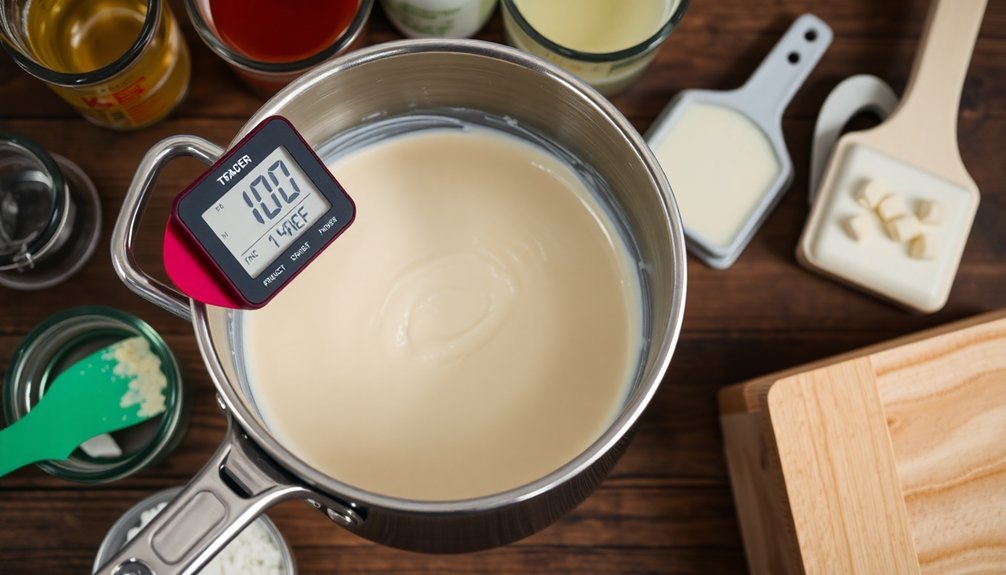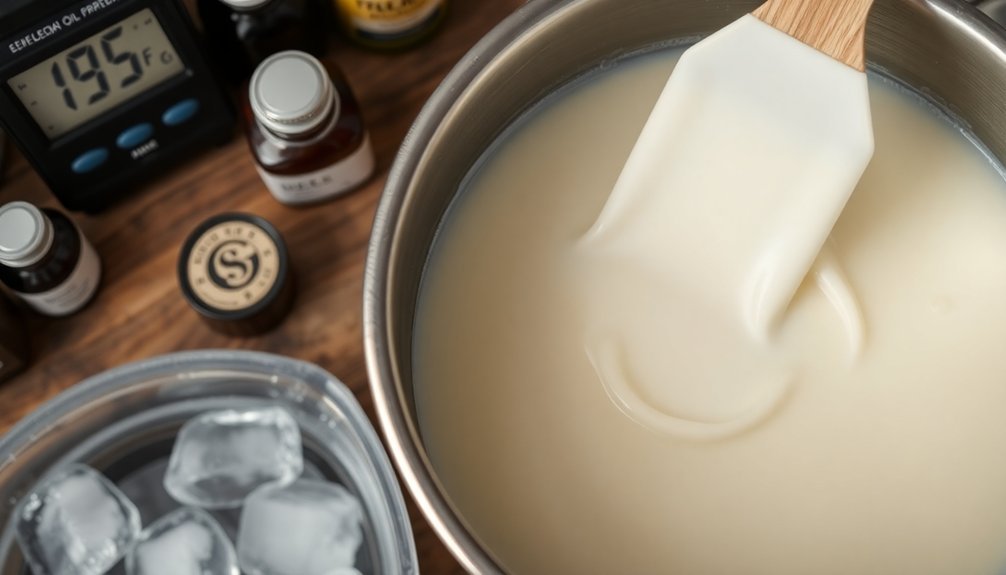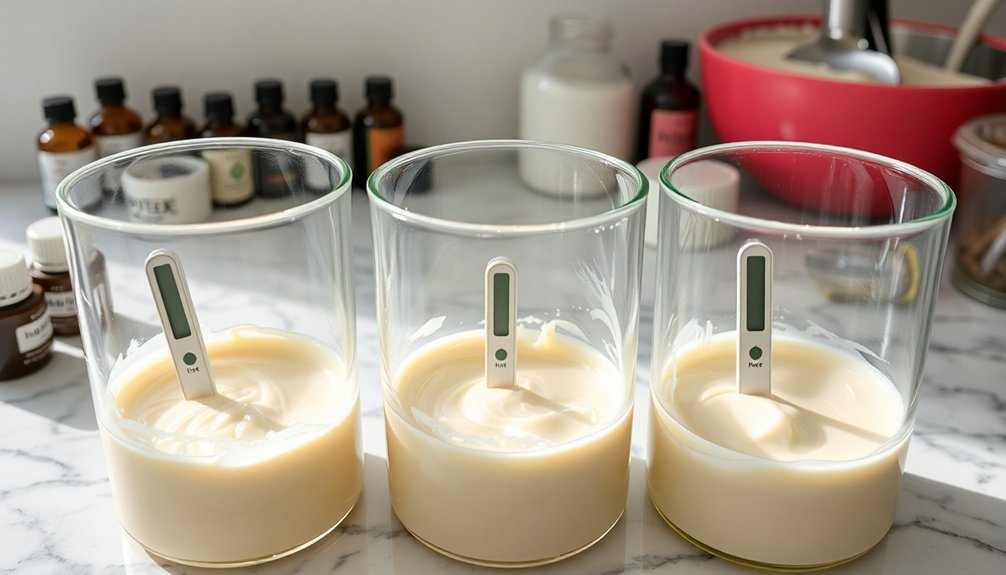Maintain temperatures between 33-38°C for predictable soap trace. Keep your oils and lye solution within 2°C of each other to prevent premature acceleration. Pre-cool your lye solution and use slow-moving oils like olive oil to extend working time. Monitor temperature changes throughout the process, as even small fluctuations can dramatically affect trace thickening. These temperature controls give you more creative freedom for intricate designs. The following tips will transform your soap making experience completely.
The Perfect Temperature Range for Predictable Soap Trace

When crafting cold process soap, controlling temperature is essential for achieving the perfect trace. For best results, keep both your oils and lye solution between 33 to 38°C. This ideal temperature range guarantees your soap batter behaves predictably, giving you maximum control over the process.
Aim to maintain a temperature difference of no more than 2°C between your oils and lye. This small differential prevents unwanted acceleration of trace happens, extending your working time.
For intricate designs or swirls, you might consider working at the lower end of this range—cooler temperatures slow saponification and give you more time to work with your soap batter.
Using a 1:1 water-to-lye ratio further helps control how quickly trace happens, especially in temperature-sensitive formulations.
Heat Management Techniques for Extending Working Time

Once you've established your ideal temperature range for soap making, implementing effective heat management techniques becomes your next priority for extending working time.
Pre-cool your lye solution before combining it with oils to considerably slow saponification. Aim to maintain both components between 33-38°C while ensuring they're within 2°C of each other to prevent rapid acceleration.
Consider incorporating slow-moving oils like olive oil in your formulation to naturally extend the time before reaching trace.
Experiment with water-to-lye ratios; a 1:1 ratio often provides excellent control over working time while maintaining proper fluidity.
Monitor temperature throughout your process, as even small heat fluctuations can dramatically affect how quickly your soap batter thickens.
These techniques give you valuable additional minutes to execute complex designs and color work.
Reading Trace Levels: Visual Cues and Temperature Correlation

Successful soapmakers develop a keen eye for identifying trace levels, which directly correlate with specific temperature points during the saponification process.
You'll recognize thin trace at lower temperatures (around 33°C) by its fluid, pourable consistency—perfect for smooth surfaces and intricate designs. As temperatures climb to approximately 36°C, watch for medium trace with its characteristic ripples and thicker texture, ideal for layering techniques.
When your mixture resembles pudding, you've reached thick trace, typically occurring above 38°C. This consistency isn't suitable for smooth pours but works well for textured designs.
For precise temperature control, maintain no more than a 2°C difference between your oils and lye solution. This vigilance prevents premature thickening and gives you command over your desired trace levels throughout the creative process.
Frequently Asked Questions
What Temperature Is a Soap Trace?
"Soap trace" isn't a temperature—it's the thickening stage of your soap mixture. You'll achieve ideal trace control when both your oils and lye are between 33-38°C, keeping them within 2°C of each other.
Why Is My Cold Process Soap Trace Too Thick?
Your cold process soap trace is too thick likely because you're mixing at high temperatures, using accelerating additives, over-blending with your stick blender, or working with a water-to-lye ratio that's too low.
How Do You Slow Down Trace in Cold Process Soap?
To slow down trace in cold process soap, you'll want to keep temperatures low (33-38°C), use more olive oil, increase your water-to-lye ratio, avoid prolonged stick blending, and mix by hand when possible.
What Is the Best Temperature for Soaping?
For best results, aim for temperatures between 33-38°C (91-100°F) for both oils and lye. You'll want to keep them within 2°C of each other to control trace and give yourself enough working time.
In Summary
Temperature control is your secret weapon for soap making success. You'll find tracing becomes predictable when you maintain the 100-110°F sweet spot. Remember to pre-chill oils when working with accelerating additives, and use your stick blender strategically. By recognizing the connection between temperature and visual trace signals, you'll gain the confidence to create complex designs without rushing. Master these techniques and you'll transform your soaping experience.





Leave a Reply